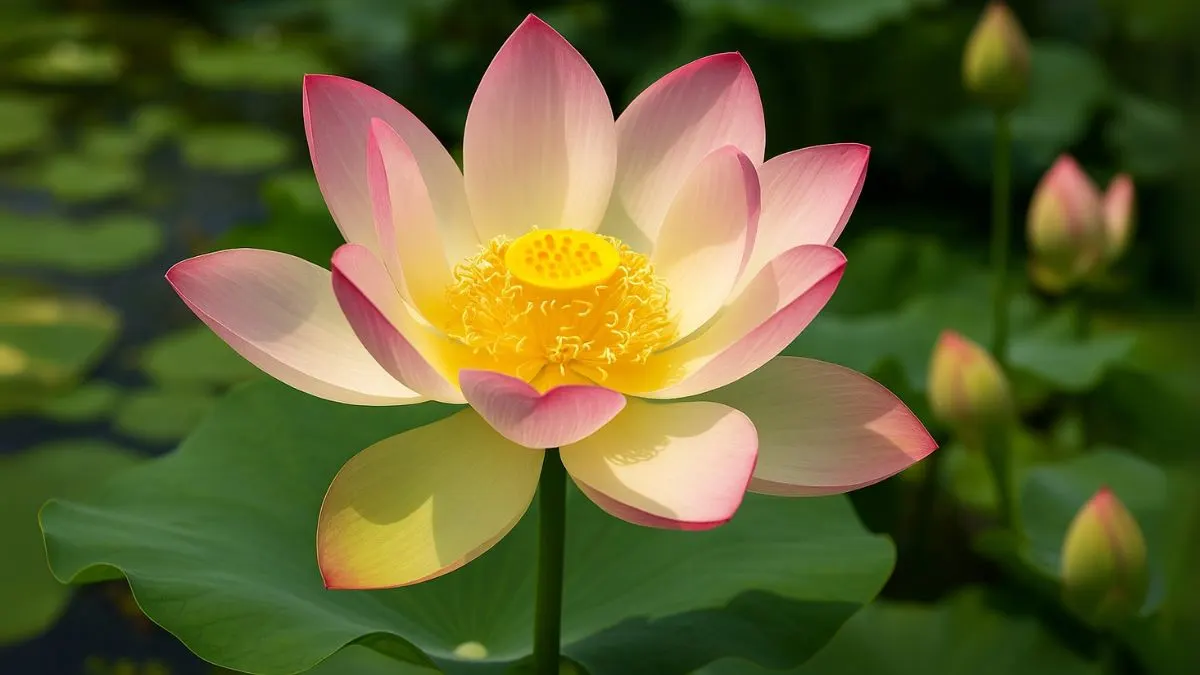The Lotus is more than just a plant—it’s a symbol of purity, beauty, and resilience. Known for its stunning blooms that rise gracefully from muddy waters, growing Lotus at home is both a rewarding and spiritual experience. Whether you live in Canada, the U.S., or anywhere across the globe, you can cultivate this sacred flower indoors or outdoors with the right care.
If you’ve ever dreamed of having your own blooming Lotus, this guide will walk you through everything—from selecting high-quality Lotus plant seeds to ensuring they flower under the sun.
Step 1: Selecting the Right Seeds

A successful Lotus journey begins with selecting high-quality Lotus plant seeds. Look for seeds that are brown or black with a hard outer shell. Unlike other seeds, Lotus seeds need a little help to sprout.
To start the process, take Lotus seeds and file the seeds. You can also scrape the seed with a file until you see the cream-colored inner layer. This step is called scarification, and it allows water to penetrate the tough seed coat. Without this, germination may take months—or may not happen at all.
Step 2: Germination in Water
Once scarified, it’s time to germinate. And here’s the fun part: Lotus seeds can be simply dropped in water in a clear glass bowl!
- Fill a bowl with clean, room-temperature water.
- Place the scarified seeds gently inside.
- Change the water daily to prevent bacteria and fungus.
- Within 4–7 days, you’ll notice tiny sprouts emerging.
💡 Personal Tip: When I first tried growing Lotus, I left the seeds in the same water for a week. Unfortunately, they rotted. Daily water changes are non-negotiable!
Also Read: How to Grow Pumpkins for a Big, Festive Fall Harvest
Step 3: Transferring to Soil
When the seedlings grow a few inches tall and develop roots, it’s time to move them to soil.
- Use a wide, shallow container or pond.
- Add heavy loamy soil (avoid sandy or fertilized mixes).
- Gently press the seedlings into the soil, leaving the leaves above the surface.
- Fill the container with 2–4 inches of water above the soil level.
This mimics the plant’s natural aquatic habitat, ensuring strong growth.
Step 4: Sunlight Requirements
Here’s a critical step—Lotus need 6 hours of direct sunlight to flower. Always start by providing a sunny location with at least six hours of direct sunlight daily. Without adequate light, the plant will grow leaves but won’t produce flowers.
If you’re in a colder region, you may need to bring the container indoors during winter and use grow lights to maintain warmth and light.
Step 5: General Care and Maintenance
- Water: Replace water in containers weekly to prevent stagnation.
- Fertilizer: Feed Lotus plants lightly during their active growing season. Avoid overfertilizing young plants.
- Temperature: Lotus thrive in warm climates. Keep water temperatures above 70°F (21°C) for best growth.
- Pests: Aphids may appear but can be washed off with water.
🌸 From my experience, adding pebbles around the seedlings helps keep the roots anchored and prevents water from getting murky.
Also Read: 7 Flower Seeds Every Beginner Gardener Should Plant
Quick Care Table
Care Aspect |
Details |
Seed Prep |
Take Lotus seeds and file the seeds or scrape the seed with a file |
Germination |
Simply dropped them in water in a clear glass bowl! |
Sunlight |
Lotus need 6 hours of direct sunlight to flower |
Soil |
Heavy loamy soil, unfertilized |
Water |
Keep water fresh; 2–4 inches above soil |
Ideal Location |
Start by providing a sunny location with at least six hours of direct sunlight |
Common Mistakes to Avoid
- Not scarifying seeds – they won’t germinate without filing.
- Too little sunlight – no flowers will bloom.
- Using sandy or fertilized soil – roots won’t anchor properly.
- Not changing water during germination – seeds may rot.
With care and consistency, you’ll soon be rewarded with one of the most breathtaking flowers in the world—right in your own home.






